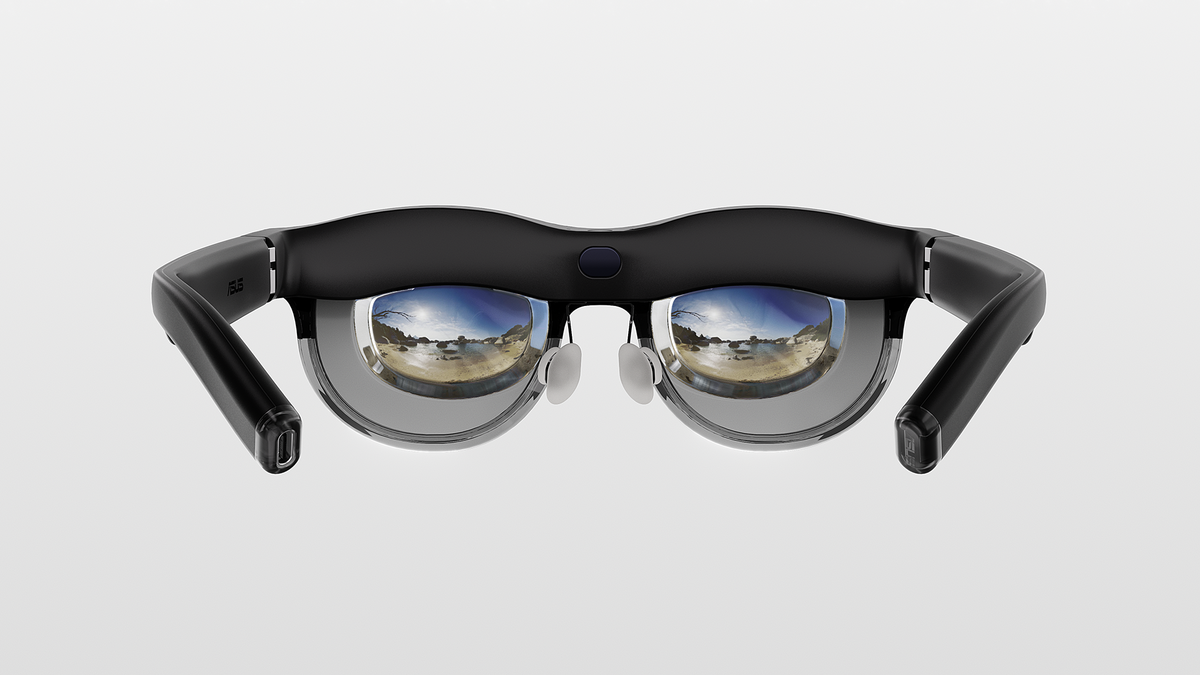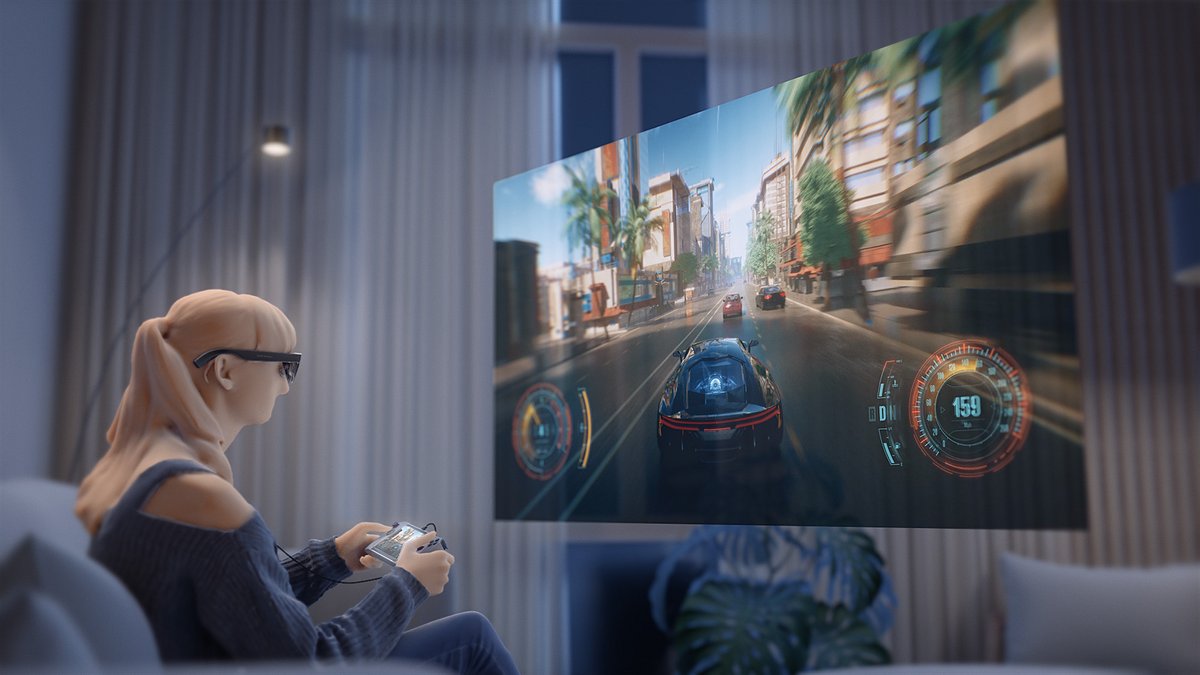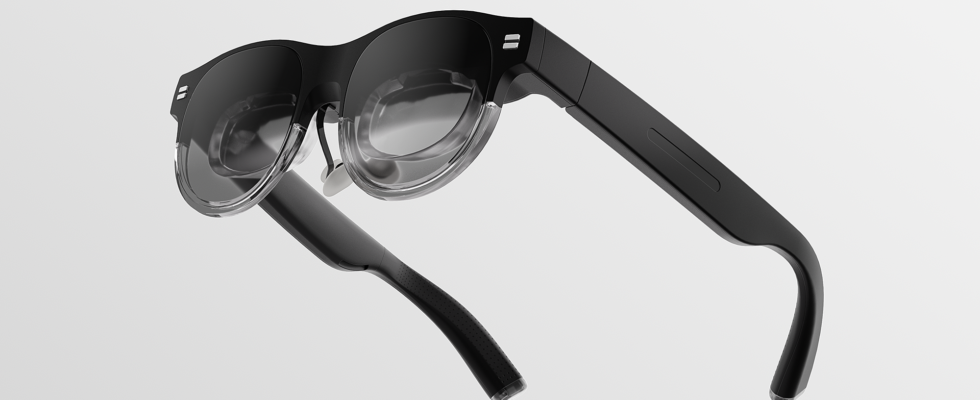Asus announces its connected glasses, the AirVision M1, perfect halfway between Google Glass and Apple Vision Pro, designed to replace your multiple screens.
Despite a nice number of new monitors announced by Asus during CES 2024, the Taiwanese brand intends to make you abandon them in favor of their first connected glasses, just unveiled.
A simple, but effective technical sheet
On one side there is the prehistoric Google Glass and on the other side there is the Apple Vision Pro. In the middle of these two worlds are recent connected glasses, designed to replace screens rather than using mixed reality. This is exactly the case with the Asus AirVision M1, which simply wants to replace your computer monitors, or even your television.
The frame is equipped with a Micro OLED FHD (1920 x 1080 pixels) screen, obviously split over both eyes, with a brightness of 1,100 nits and a DCI-P3 (95%) color gamut. As for the field of vision, very important for this type of product, Asus is banking on a vertical field of 57°, a little more than the field of vision of a human being according to the brand (which announces a natural field of vision of 55°).
For the moment and like many products present at CES 2024, the Asus AirVision M1 are nothing more than a very advanced prototype which, despite its future marketing, will serve as a stepping stone for Asus for the future. But like almost everything else Asus announced in Las Vegas, the glasses have no price or release date.

The great replacement of physical screens
The very principle of these connected glasses is not very similar to Apple’s Vision Pro. There is no question here of using them alone, the Asus AirVision M1 are not independent and must be connected via USB-C to a computer, a smartphone or a compatible games console, such as the ROG Ally to name a few. Once the mount is connected, it is possible to display in your field of vision as many virtual screens as your device allows, in various formats (16:9, 21:9 and 32:9) in landscape or portrait orientation. .
In addition to using your keyboard and mouse (or any other device depending on the connected device) to navigate the interface, the mount has a touchpad on the left temple, allowing you to adjust the brightness and manage the different screens displayed . Finally, the product has its own noise-reducing microphones and speakers.
In short, Asus’ glasses clearly want to replace your dual or triple screen setups, allowing you to go even further without worrying about the space potentially occupied by so many monitors.
Obviously, the problem with this type of connected glasses is the frame. While they certainly won’t please everyone, they also have the disadvantage of not being very ergonomic and could become uncomfortable with prolonged wear. The Asus AirVision M1 should for the moment be perceived as a product to be used occasionally for a few hours, like a computer screen, not as a life companion that could be forgotten on your nose.






Source : Asus

4